If you are in the market for a more unusual RS then how about this Capri RS2600 on Ebay?



This RS2600 is noteworthy for several reasons, being Ford’s first fuel-injected production car and a homologation special for the highly successful RS2600 European Touring Cars
This example could very well be an important piece of Ford Motor Company history as it’s believed to have been a development car, one of three prototype RS2600s
First registered as K-MR 198 to Heinz-Otto Schmitter on 10/07/1970
Accurately and sympathetically restored with the emphasis on period detail right down to the dashboard instruments and headlight arrangement
Fully road legal with a history file sufficient to keep the most dedicated motor historian busy
When Ford introduced the Capri in 1968, the European market was abuzz with praise for the new affordable coupe with sleek lines and fastback styling. It was nicknamed the ‘European Mustang’ as Ford had used the same concept and marketing segment in Europe as it did in America. Even so, something was missing. The Capri did have a long list of options and engines, but it did not have a true performance version that could be developed sufficiently within the regulations to enable it to regularly be successful in the sales-enhancing world of International saloon car racing. A number of manufacturers faced the same problem and consequently, several of them began to develop what were to become known as ‘Homologation Specials’. These were showroom saloons fully developed to be effective and competitive on the circuit but, in order to comply with the regulations that a certain number (normally 500) were available for sale to the public, were finished fully trimmed and road legal. So, in late 1969 work begun on a ‘special RS Capri’- a full performance model for the road and for the track.
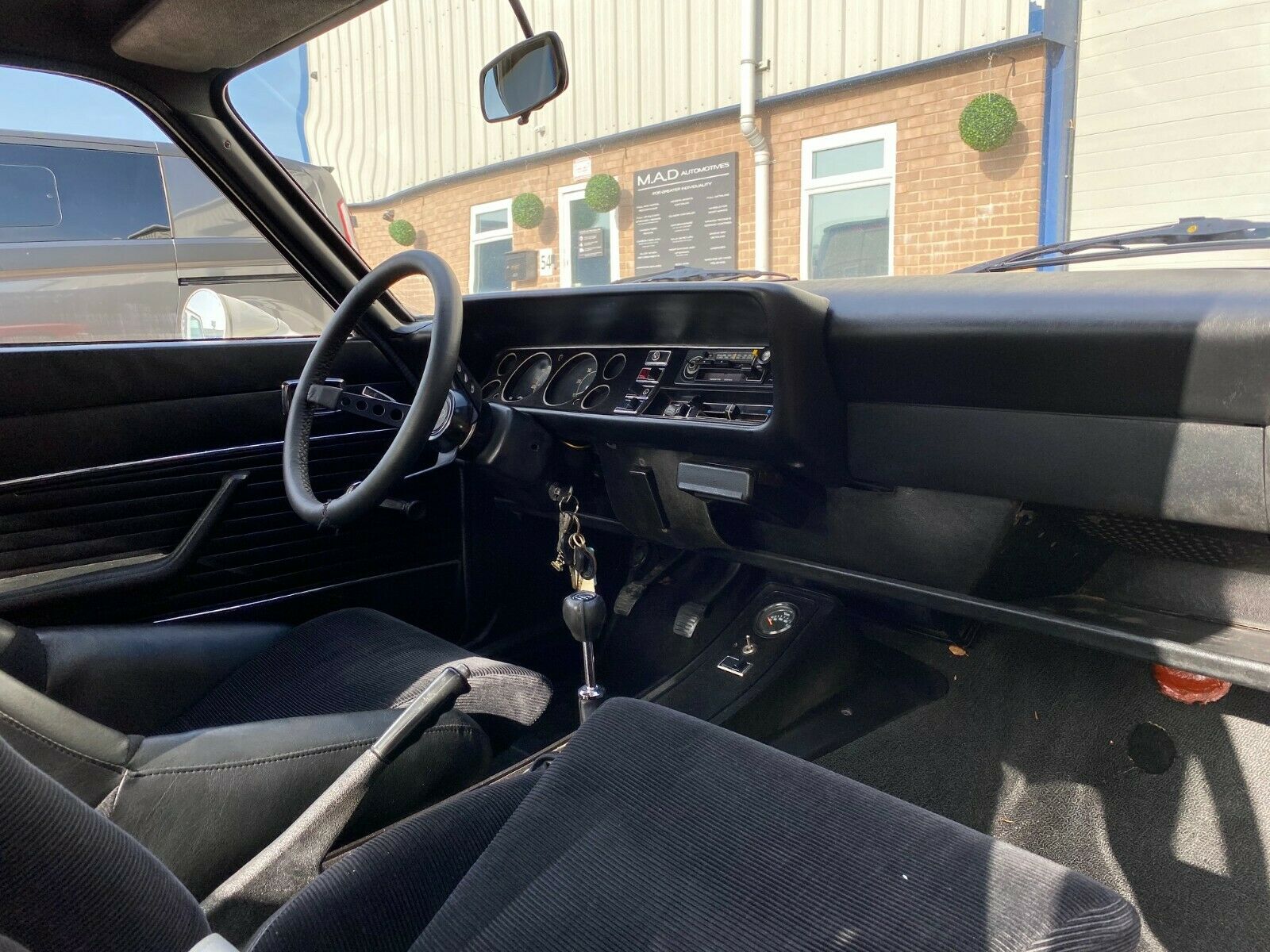


The new car, named ‘RS2600’, made its debut at the 1970 Geneva Motor Show, albeit with a mock-up fuel injection system. It wasn’t until September of the same year that the first fuel-injected RS2600 left the Niehl assembly line in Cologne. Based on the 2600GT, Ford of Germany’s top-of-the-range model at the time (although Cologne’s first efforts involved modified 2300GTs), the RS2600 was built in limited numbers and featured some very serious modifications, making the Capri one of the fastest cars on the market and the fastest Ford in Europe.
The engine was a Cologne 2.6 V6 unit (hence the name RS2600) reassembled by Weslake and featuring its special all-alloy cylinder heads. It also utilised Kugelfischer fuel injection to raise power to 150bhp and was fitted with modified suspension, a close-ratio gearbox, lightened bodywork panels, ventilated disc brakes and aluminium wheels.
Performance figures for the RS2600 were very impressive producing 150bhp at 5,800rpm which was sufficient to propel the new car from 0-62mph in 8.6secs and on to a top speed of 124mph. These were the road car figures and today, 150bhp may not seem remarkable, but back in 1971, it was class leading.
The RS was easily recognisable as it had no bumpers, two vents in the front panel and sported Richard Grant road wheels, – the lightweight versions of the car used Minilites – it also had a pair of rectangular wing badges reading RS2600 and an RS roundel on the boot lid. These cars had the front cross member re-drilled for negative camber and were fitted with uprated brake pads and linings supplied by Ferodo, competition front springs, single leaf rear springs and Bilstein shock absorbers all-round.
Inside, as with the lightweights, Scheel sports seats were used though these were now reclining and the rear seats were of a bench design trimmed in the same heavy cord material. A Springall deep-dish steering wheel was used, but there was no centre console, which was widely used on the Mk1 Capris.
Externally the RS2600 gained chrome quarter bumpers with the front ones incorporating the indicators, but the two vents in the front panel were now deleted, wheels were now the RS 4-spoke items similar in design to those of the Mk1 RS Escorts but 6 inches in width. Twin Cibie headlamps also adorned these cars
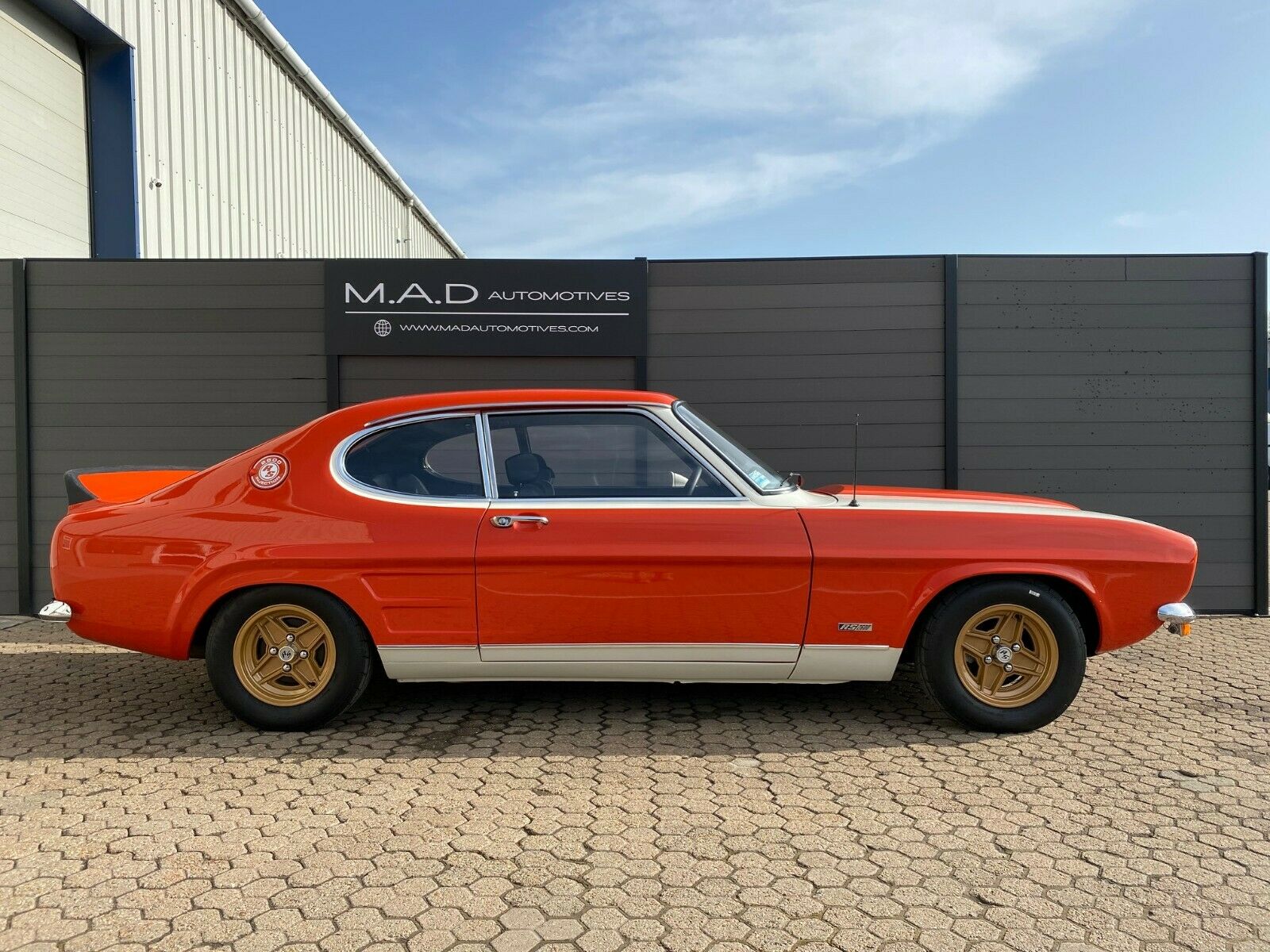
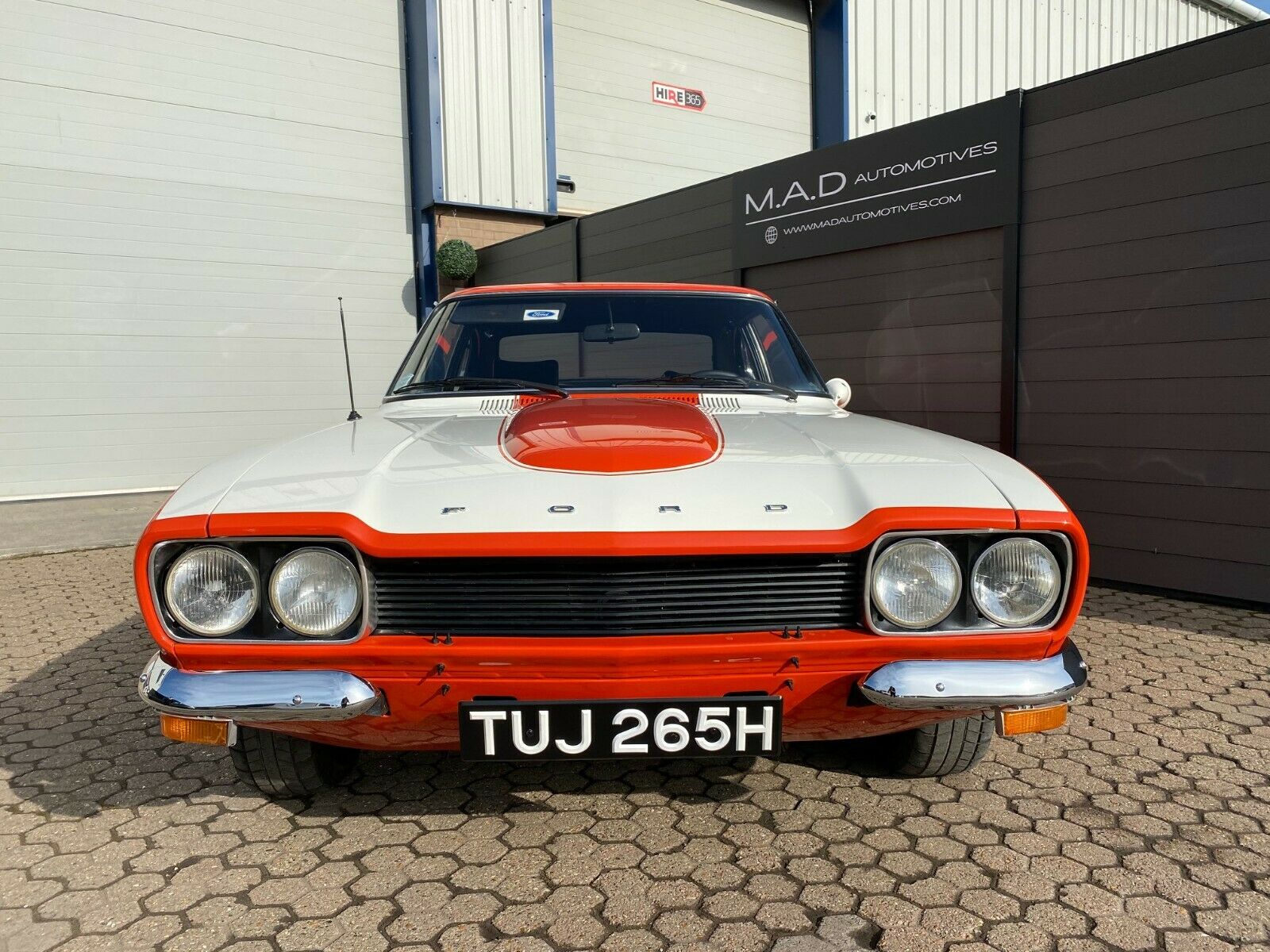

A number of early successes, including class wins, were achieved in international rallies in 1969 but it was already clear that the car’s greatest potential was as a circuit racer. The Capri RS2600 was immediately used as a basis for the racing model intended for FIA Group 2 races and European Touring Car Championship. The race cars specifications were very interesting because they had the same V6 Weslake engine with special all-alloy cylinder heads, Kugelfischer fuel injection and dry-sump lubrication giving it approximately 320 bhp at the rear wheels.
Success came immediately with Germany’s Dieter Glemser winning the Drivers’ title in the 1971 European Touring Car Championship behind the wheel of a factory-entered RS2600 and was taken forward the following year by a fellow-German Jochen Mass. The RS2600 was totally dominant in the 1972 ETCC season, with five Capri drivers on top of the championship standings: Mass, Glemser, Gerrard Larrousse, Alex Soler-Roig and Gerry Birrell.
The Capri RS2600 offered here today has a very interesting story to tell, and according to a previous owner, it could very well be an important piece of Ford Motor Company history. It is believed that this car may have been a development car, one of three prototype RS2600s, however, despite there being significant evidence to suggest that is the case, there are a number of questions that remain unanswered, so there is currently insufficient proof to be certain.
Not unusually, this car started life as a German-built 2.3GT but was bored out to 2637cc with a long-throw crankshaft to achieve the required performance. When discovered in 2010 it required restoration. The block in the car was numbered beginning ‘QZA’ which was a correct RS2600 designation. The tale goes that three prototype cars were taken from 2.3 GT production line and used by Ford to evolve the RS2600. Our car was first licensed ‘K-MR 198’on July 10th 1970 and the original logbook shows the first owner as one Heinz-Otto Schmitter. Correspondence in the history file by a previous owner named Roger King from Brackley in 2009, suggests that Schmitter was a Ford Motor Company employee, although we cannot confirm this. Research conducted by King suggests that the chassis is that of a German 2300GT, however, the logbook shows the car to have been modified at the factory in June 1970 with all the updates to full RS2600 specification, before being sold with the correct QZA engine fitted as per the description from a previous owner when acquired in 2012, pre-restoration. An engineer by trade, Roger King had intended to restore this car, but that challenge was instead eventually undertaken to an exacting standard by the owner prior to our vendor
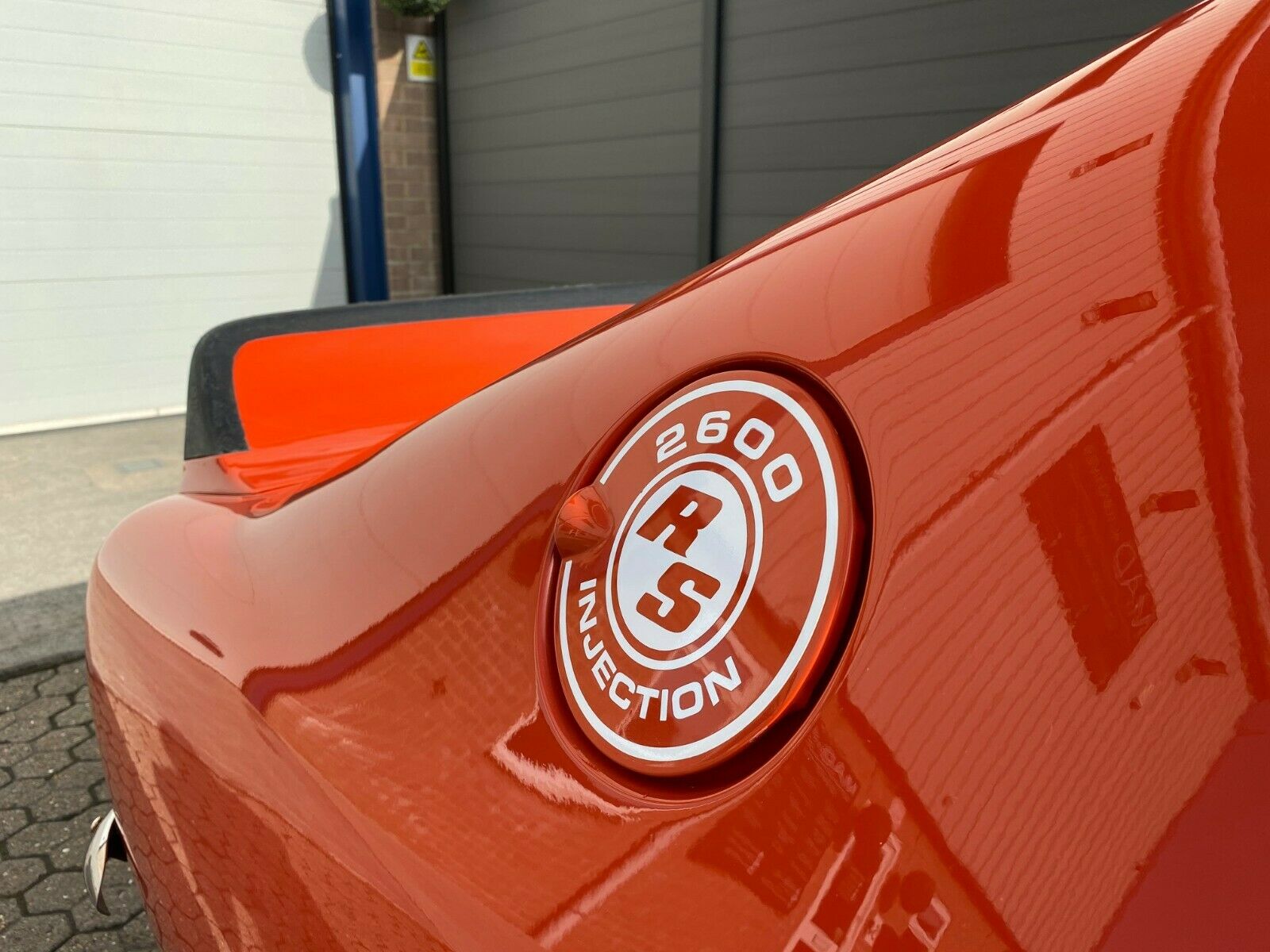

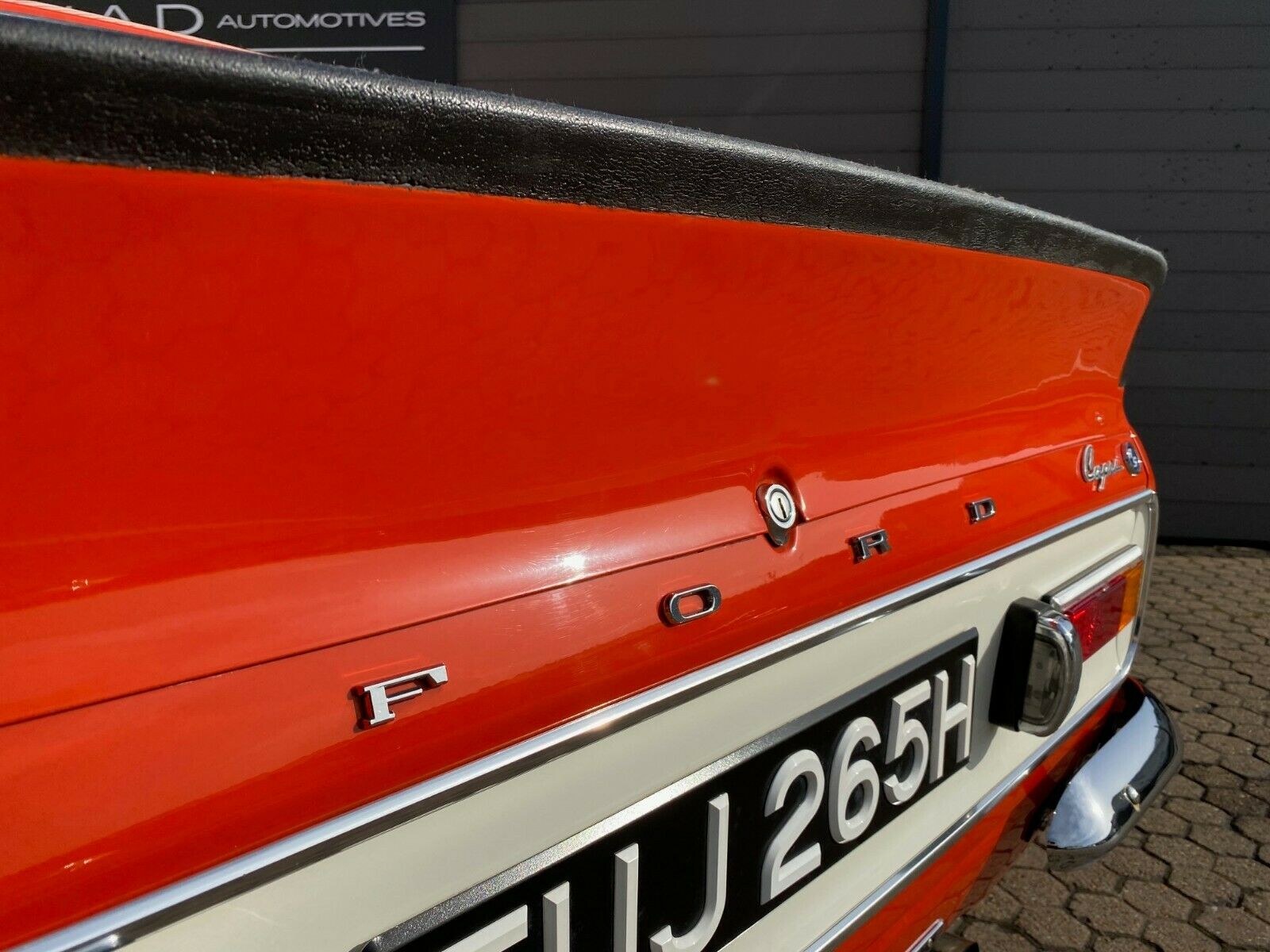
Whether this car is a development car or not, one thing is for certain – it truly is special to behold. The QZA engine which was fitted in the car could not be retained as the block was irreparably cracked so a replacement 2300 engine, bored to 2600 specification was sourced, and the restoration began in earnest. Many thousands of pounds have been spent to accurately and sympathetically restore the car’s period detail right down to the dashboard instruments and headlight arrangement.
If you fancy adding this to your garage pop over to Ebay
 OneMoreFord One is Never Enough!
OneMoreFord One is Never Enough!



